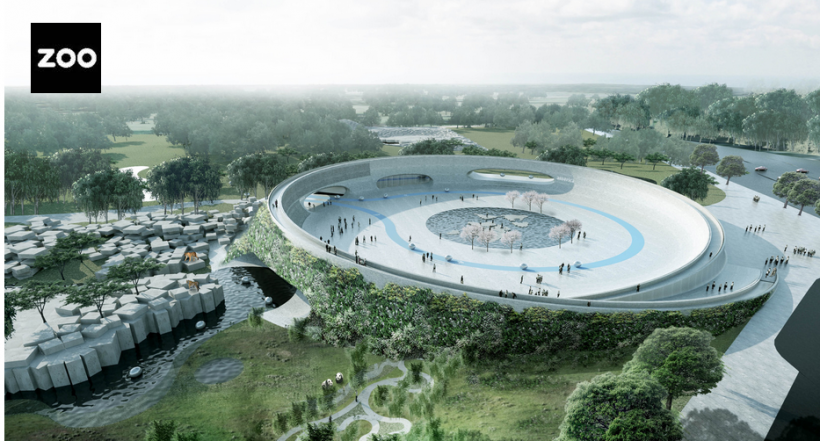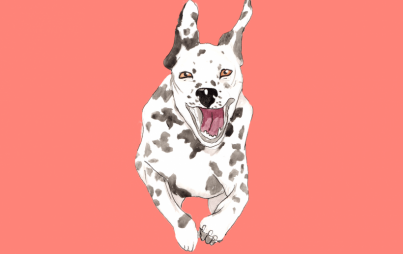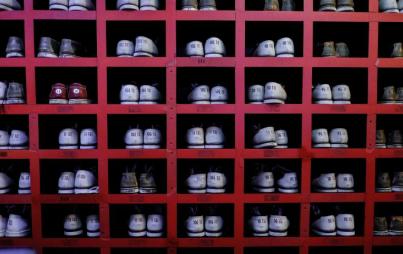
Rendering by BIG Architects
Denmark is poised to revolutionize animal captivity by 2019; the Givskud Zoo is about to undergo an absolute reimagining of how humans interact with not so wild-life. Reversing the traditional model, BIG architects are seeking to construct environments not only sans cages, but where multiple species are able to interact in what is a much closer representation of a natural habitat.

BIG architects also boasts plans of bike paths, zip-lines and even pods to transport visitors through forests, savannahs, rivers, bamboo cottages and rice fields; they call their vision a "Zootopia" which is a beautiful bastardization, coupling together a traditional zoo with a safari:
To create a framework for such diverse users and residents such as gorillas, wolves, bears, lions and elephants, is an extremely complex task. We are pleased to embark on an exciting journey of discovery with the Givskud staff and population of animals—and hope that the quality of life for the animals as well as the keepers and guests —but indeed also to discover ideas and opportunities that will be able to transfer back into the urban jungle. Who knows perhaps a rhino can teach us something about how we live — or could live in the future? —BIG Architects Project Statement
The Intersection of Preservation and Animal Rights
It is important to realize that while many are deeply offended by the nature and concept of animal captivity, without many zoological institutes and programs, a significant number of endangered species would quite possibly have gone extinct:
"...in light of this evolution from places to entertain, to scientific institutions dedicated to education, conservation, and research, particularly critical areas of research that focuses on genetic diversity, zoos are now necessary. They are necessary not only for the future survival of the animal species, but to provide a connection, a human-animal bond with all animal species." —Thorton W. Blease of Common Sense For Animals
While many can agree that zoos as a general concept are vital to preservation at this point in history, the details of these institutions are highly debatable, with the very notion of confinement at the forefront of concerns. While humans have distanced themselves from the animal kingdom over the millennia, the relatable needs of these creatures are mounting, and evidence shows that the effects of captivity can include:
* increased physical ailments due to lack of sufficient activity
* increased aggression (and numerous other mental afflictions)
* inability to properly care for young (possibly due to lack of pack/herd/pod, etc.)
* nutrition issues (due to lack of food source diversity)
How can we balance the need for conservation efforts without sacrificing animals' wellbeing?
Future Zoos: Roam If You Want To
We can't help but picture an ecstatic Noah's Arc cast of characters shaking tail feathers to the B-52s when we think about the possibility of unenclosed habitats in which different species can coexist (as in real nature?! Gasp!). Renderings of glass bubbles (containing human visitors) being zip-lined over misleadingly-musing Grizzly bears is pretty hard to resist.
Denmark's new attraction is set to include three main habitats ("Asia", "Africa" and "America") connected by 2.5 miles of walkway and separating man from beast via underwater channels and varying elevations.
But are we simply sidestepping the tough questions to stride closer to fiction and a fantasy? While it's fair to say that Denmark's new approach to zoo confinement is certainly preferable to our current (rather depressing) methods, we're curious to examine the public's desire to maintain these institutions of captivity in the first place. Studies have shown the inextricable biological link between humans and other animals, with benefits including everything from increased self-esteem in children with pets, to lower blood pressure in adults post-zoo visit.
Then again, A long, dark history of circus acts, side shows and yes even zoos have tainted our past with unspeakable animal abuse. Is creating a cage-less zoo simply a gentler cruelty?






